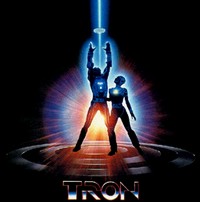
From the seventh though to the thirteenth centuries, books-usually religious in nature-were created one by one by hand, and it took a huge amount of deication to create such beautiful manuscripts. While the Chinese developed a form of simple printing at the beginning of the eleventh century, it wasn't until the fifteenth century, when the German inventor Johannes Gutenburg invented his printing press using movable type, that the production and distribution of printed text and images in volume was possible.
Centuries later, printing was still done mechanically. Great newspaper pressess could churn out thousands of copies bearing text and photographic images, and by the mid nineteenth century they were able to do so in color. Before any book or newspaper could be printed, however, the production and layout still needed to be done by hand.
Centuries later, printing was still done mechanically. Great newspaper pressess could churn out thousands of copies bearing text and photographic images, and by the mid nineteenth century they were able to do so in color. Before any book or newspaper could be printed, however, the production and layout still needed to be done by hand.
Then came the computer. A novelty at first, computers were created as counting machines and calculators for scientists and mathematicians. Soon simple displays were invented for displaying text and later graphics. Sophisticated interfaces were developed, and in 1984 Apple Computer released the MacIntosh sporting its "desktop" metaphor interface. With the introduction of Aldus Pagemaker and laser printers, the desktop-printing revolution arrived and the rest is history.
The advent of personal computers featuring easy to use graphical interfaces was the spark that ignited the desktop publishing revolution. This marked a huge change, enabling anyone with access to a computer to create and manipulate text and images. However, there were more than a few who were interested in images alone.
With the introduction of the Apple MacIntosh and programs like Aldus Pagemaker (later to become Adobe Pagemaker) the role of the computer in publishing was set. With a computer that featured an easy to use graphical interface, it was simple to lay out text and images in the digital realm, then transfer them to an image-setter to produce color separations for printing.
The Postscript language bridged the gap between the computer and the real world, converting digital fonts and graphics into real printed text and graphics. Similarly, digital scanners took photographic prints or negatives and converted them into digital images for manipulation on the computer.
The advent of personal computers featuring easy to use graphical interfaces was the spark that ignited the desktop publishing revolution. This marked a huge change, enabling anyone with access to a computer to create and manipulate text and images. However, there were more than a few who were interested in images alone.
With the introduction of the Apple MacIntosh and programs like Aldus Pagemaker (later to become Adobe Pagemaker) the role of the computer in publishing was set. With a computer that featured an easy to use graphical interface, it was simple to lay out text and images in the digital realm, then transfer them to an image-setter to produce color separations for printing.
The Postscript language bridged the gap between the computer and the real world, converting digital fonts and graphics into real printed text and graphics. Similarly, digital scanners took photographic prints or negatives and converted them into digital images for manipulation on the computer.
The History Of 3D Animation:
Computers have revolutionized the way we create and work with images and graphics. It's sometimes hard to grasp the vast, fundamental shift that technology has caused in the creation and distribution of visual media, especially since the actual workings of the technology still remain a mystery to many.
Animation Schools | Free Animations | Animation Freeware & Shareware | Animation Top 10's | Fun Art Quizzes | Build A Website | Web Design Software
Animation Schools | Free Animations | Animation Freeware & Shareware | Animation Top 10's | Art Quizzes | Build A Website | Web Design Software
Contact | Sitemap | Privacy Policy | Article Archive
Copyright 2006-2011 Build A Website
Contact | Sitemap | Privacy Policy | Article Archive
Copyright 2006-2011 Build A Website

It was a program that could take digital images and make adjustments to them that sparked the digital imaging revolution. Photoshop was designed by brothers John and Thomas Knoll to assist John in his work at the legendary special effects company, Industrial Light and Magic (John would later become an important figure in the 3D industry, too). The program allowed simple color correction and file format conversion, plus basic painting and cloning tools. Suddenly it was possible to do pretty impressive things with digital images-things that were previously impossible. The digital darkroom was born.
Photoshop was licensed to Adobe and it has since become the most popular and important imaging program. It is also an incredibly important application for 3D artists, for whom it is used to create textures or composite 3D renders with other images.
The combination of Photoshop and early CAD (Computer Aided Design) software paved the way for new types of digital art. We can now use computers to generate photorealistic images using 3D software. We can combine computer generated imagery with imagery from the real world. We can even take 3D objects designed in the digital realm and reproduce them in the real world through processes such as stereolithography and computer controlled manufacturing. Increasingly, anything is possible.
Photoshop was licensed to Adobe and it has since become the most popular and important imaging program. It is also an incredibly important application for 3D artists, for whom it is used to create textures or composite 3D renders with other images.
The combination of Photoshop and early CAD (Computer Aided Design) software paved the way for new types of digital art. We can now use computers to generate photorealistic images using 3D software. We can combine computer generated imagery with imagery from the real world. We can even take 3D objects designed in the digital realm and reproduce them in the real world through processes such as stereolithography and computer controlled manufacturing. Increasingly, anything is possible.
You may also find this page useful:
Which 3D Animation Software Should I Use?
Which 3D Animation Software Should I Use?
